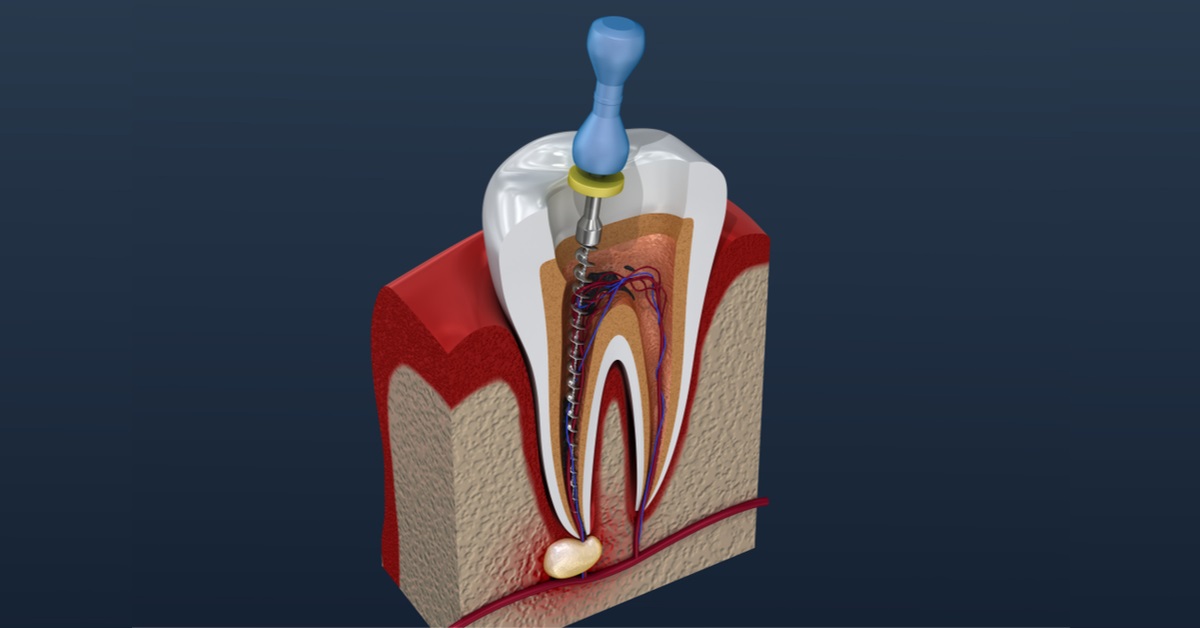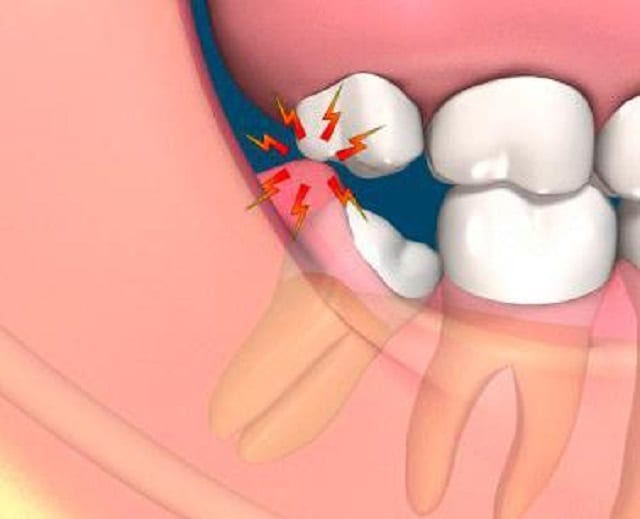Root Canal Treatment, There’s no doubt that everyone desires to have healthy natural teeth that function optimally, and this is the goal of root canal treatment and preserving the tooth for as long as possible. In the following paragraphs, we will shed light on the reasons that necessitate root canal treatment, whether regular or nerve canal, so follow along.

Root Canal Treatment
Root canal treatment is a medical procedure used to maintain the health of teeth, where the damaged nerve is replaced with a filling after cleaning it. Root canal treatment is considered successful as soon as all painful symptoms disappear, and it removes the cause of inflammation and pain.
It is also a painless procedure that can be used to treat inflamed nerves inside the teeth, and this procedure provides support for the teeth and removes any sensation of pain that a person may feel due to a previous filling. In the following paragraphs, we will get to know the steps of performing root canal treatment and the most important tips to follow for preventing cavities and other causes that lead to root canal treatment.
“Take advantage of our team’s expertise in root canal treatments for teeth and molars, and get ready for a healthy and beautiful smile. Visit us today and enjoy outstanding medical care and amazing results.”
There are some signs that appear on the patient and indicate that they need a root canal treatment for their tooth, which include the following points:
If you want to know more about the types of root canal treatments in greater detail, we recommend reading the following article.
Yes, of course, root canal treatment requires anesthesia due to the severe pain that results during the treatment of root canals and cleaning them, and then placing the filling inside. The effect of the anesthesia persists for a few hours after the filling is done, which causes the patient to feel numbness in the area of the tooth and prevents them from consuming food and drink. They may also experience swelling of their lips and inability to move them, but these effects subside after a few hours, allowing the patient to use their mouth normally.
Tooth filling is an essential treatment to preserve the natural structure of the tooth and help it function optimally. Usually, a tooth filling does not require more than one session, and for a root canal, it may take up to three sessions if the inflammation is severe. This, of course, depends on the location of the tooth, the number of root canals, and the patient’s overall condition.
Of course, the duration for which a tooth lasts after a root canal treatment varies from person to person, but the average period is 10 to 15 years. It also depends on the tooth’s position in the mouth. Root canal treatment is a procedure that does not cause any harm to the mouth, but over time, the color of this tooth may change and become darker and more discolored. Additionally, it becomes brittle and weak, so it is better to have a crown placed to protect the tooth and prevent reinfection.
It is essential to exercise caution after the filling and follow basic precautionary measures to avoid any complications, tooth sensitivity, and follow the doctor’s instructions, which greatly helps in preventing potential complications.
“At The Dental Center, we strive to use modern and high-quality tooth fillings. Let us make your visit to the clinic an unforgettable experience with our advanced techniques and innovative medical tools.”
There are many reasons that necessitate a patient to undergo a root canal treatment to preserve the tooth and prevent further deterioration of its condition, which include the following:
A patient with nerve inflammation may exhibit the following symptoms:

Symptoms of Nerve Inflammation
Root canal treatment is carried out in 4 main steps, which we will discuss in detail as follows:
After the previous step, the root canal treatment is complete, and the dentist will place a temporary filling over the root canal in the open area. This is done until a decision is made regarding the tooth, whether to seal it with a permanent platinum or cosmetic filling, or if the situation requires the placement of an artificial crown to protect the tooth from fracture.
Usually, the number of root canal sessions ranges from one to three sessions, but it depends on several factors, including the following:
For more details regarding root canal treatment and its sessions, you can read the following article.
After the patient completes the root canal session, they may experience some pain once the anesthesia wears off, which is completely normal and may last for a few days as well. This is due to the root canal irritating some nerves and tissues surrounding the affected tooth or molar. In such cases, it is best to take one of the painkillers prescribed by the dentist.
In some cases, the patient may experience swelling in the gum area surrounding the tooth, which is more pronounced in cases that require more than one session due to the deep decay causing the death of the tooth’s nerve.
The dentist advises the patient to follow the prescribed treatment, which includes antibiotics, painkillers, and anti-inflammatory medications to combat aerobic and anaerobic bacteria and achieve the desired result.
It is important for the patient to avoid using the affected tooth until the treatment is completed, either by placing a permanent filling or installing a ceramic or zirconia crown. The success of a root canal treatment largely depends on the dentist’s experience, skills, and ability to eliminate the effects of bacteria and germs, as well as adhering to good oral hygiene habits, such as brushing, flossing, and maintaining gum health to prevent reinfection.
The dentist performs a root canal to preserve the natural tooth for as long as possible, allowing the patient to use it for chewing and biting food as before, as well as maintaining its appearance, enjoying a beautiful smile, and improving speech articulation. However, if the affected tooth is too weak or broken to endure the treatment, increasing the likelihood of losing it, the tooth may need to be extracted and replaced with one of the following options:
We must keep in mind that if dental problems are neglected, they can progress, such as a regular filling turning into a root canal if left untreated in time. Therefore, it is essential to address dental problems promptly and not neglect them.
There are some tips that the patient should follow before undergoing a root canal to ensure the best possible outcome, which include the following:
“Get strong, natural-looking teeth with root canal treatment at our center.”
Many patients wonder whether root canal treatment is painful or not, and we can say that it has become less painful than before, as dentists now use modern techniques, local anesthesia, and painkillers to significantly reduce pain. Additionally, medications are prescribed after the procedure, and patients are advised to take some painkillers to tolerate the pain resulting from the procedure. It is essential to consult a dentist to obtain the most accurate information about the procedure, treatment, and prevention of any potential complications. Current research and studies indicate that root canal treatment may cause some pain, but the pain is generally moderate and can be easily managed.
Preventing tooth decay and erosion is an important matter for everyone, especially since teeth are an essential part of the human body, and caring for them contributes to protecting them from erosion, preventing cavities, and maintaining overall health. In the following paragraph, we will explain the most important methods and tips for preventing tooth decay and erosion:
Cavities form over time, which are holes or areas affected by deep decay in the molar resulting from neglecting dental hygiene and following a poor diet based on sweets and sugars. As these cavities increase, they begin to affect the internal parts of the molar, and then the patient feels pain if it extends to the root of the molar and the nerve. It is said that most of these cavities are painless, but they are one of the reasons that make the patient feel pain after a period from the nerve filling. If you would like to learn more about the pain after molar nerve filling, you can read this article.
How to Fill Teeth, Dental fillings are a necessary procedure to correct cavities and rebuild damaged teeth. It relies on precise techniques to achieve natural
Root Canal Treatment Procedure, When teeth face problems with the nerve, root canal treatment is an important procedure to save the tooth and restore comfort
How to Fill Teeth, filling teeth is considered an essential part of dental care, where advanced techniques are used to treat cavities and restore the function